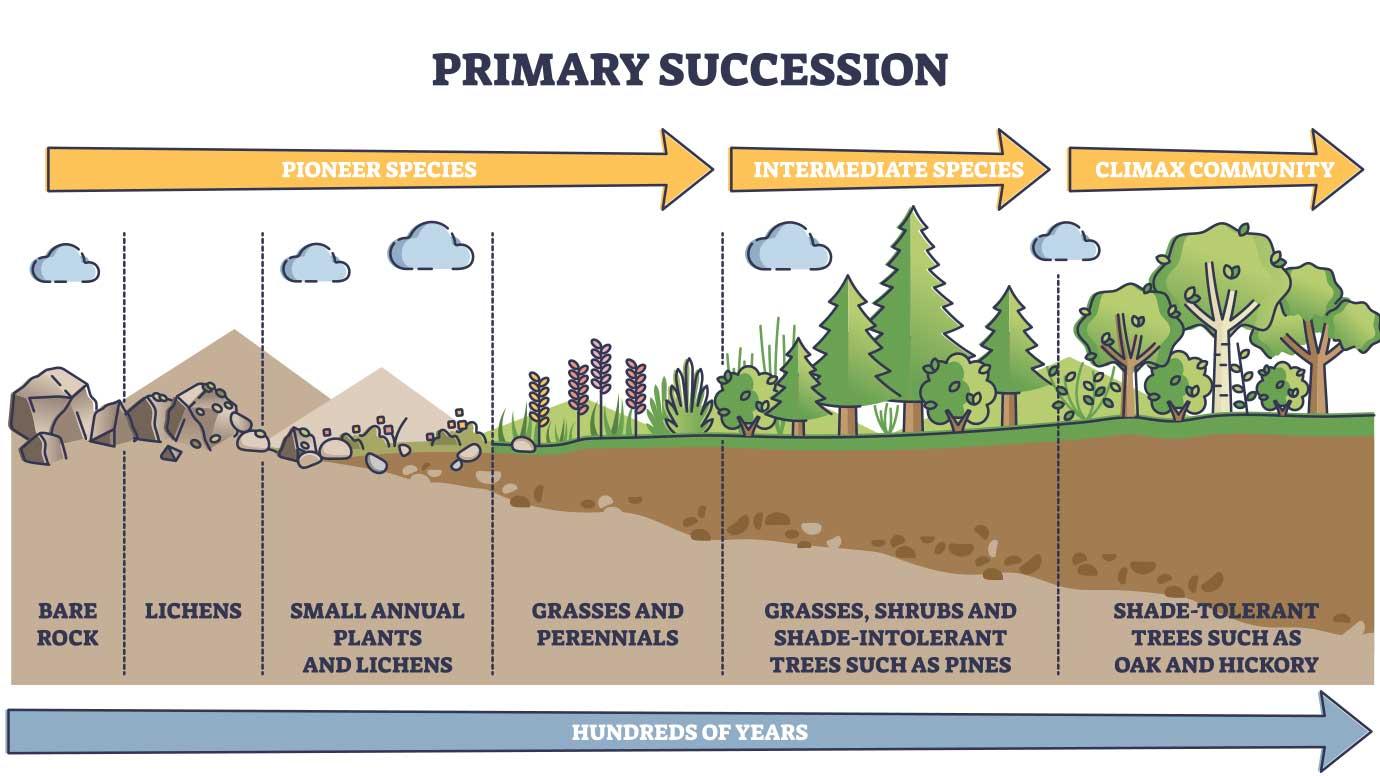In an area dominated by mossy forests, it may seem like lawns require too much maintenance. It’s hard to believe that there were once 180,000 acres of native grasslands here. We’re down to 3% of their former glory, and while there are still a few grasslands to visit, our area is predominantly a lowland forest ecosystem in Western Washington.
When one thinks about beautiful, rolling, grassy fields they are so inviting:

Source: The Nature Conservancy. Marathon Grasslands Preserve in Texas.
However, grasslands are very different from the lawns we cultivate in our yards. To highlight 2 monumental differences; in native grasslands the grass is allowed to live through its full cycle, and more importantly the soils have matured to a point that supports grasses.
 Source: UChicago News - ‘Ecological Succession, Explained’
Source: UChicago News - ‘Ecological Succession, Explained’
Depending where you live, your soil may be in its early stages where small annuals (aka weeds) are more keen to thrive than a trimmed lawn. As we prepare for a new season ahead of us, noting the moss that may be creeping its way back in after a rainy winter, some of you may be thinking through The Great Lawn Debate.
The Great Lawn Debate:
Yes, there are benefits of having a lawn: room for play, socializing outdoors, and a private place to meander and reconnect with nature. But there are also drawbacks: maintaining a lawn often requires money and time, in the form of regular mowing, irrigation, and a heap of other maintenance tasks.
So, What’s the Right Answer?
Lawns managed without regard to nature's systems are indeed a huge waste. Watering almost daily, mowing weekly, and fertilizing monthly is all a big sink of resources. Lawns maintained in a way that supports their natural growth cycles allow us to enjoy the benefits of lawns while minimizing the drawbacks. Organic lawn care methods focus on soil and plant health, allowing nature to take over some of the work. For example, if you mulch mow, the natural breakdown of the grass clippings returns vital nutrients to the soil. This practice alone reduces nitrogen fertilizing needs by a quarter!

Building the fertility and life of the soil using organic methods offers several advantages.
An Organic Lawn:
- is safe to roll around in and enjoy (no hazardous chemical exposure)
- can fend for itself without a regular dosing of fertilizer (less pollution)
- grows at more sustained rates (less mowing and watering)
- has deeper root systems (also less watering and drought hardiness)
- is less prone to disease and moss infestation (fewer headaches)
It’s undeniable the many advantages a lawn can have for our physical and mental well-being. In order for there to be a net positive gain, it’s important to minimize the effort and investment we put into it. If you bring the nutrition and soil life into balance, you’ll build a system that can work on its own.
Want to learn more about low maintenance lawn care? Give us a call. We’d love to help.
Earthdance Organics | (253) 927-2523 | info@earthdanceorganics.com


